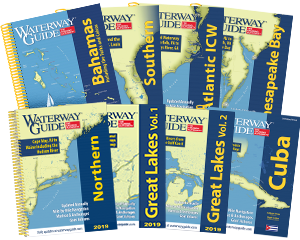
Pollsters tell us that the most popular topic of conversation is the weather – and why not? It certainly has been keeping us on our toes. We’ve written a lot about weather and seamanship. One thing that's true in all seasons is that it is the localized squall that is more likely to catch us off guard than a widely heralded storm. Being well into the hurricane season, I doubt that Mother Nature is done challenging us. This column is about that.
The Squall
In 2000, the actor, Jeff Bridges, starred in the movie “White Squall” as Captain Christopher Sheldon, the skipper of the good ship Albatross. His mission was to teach a group of high school boys the ways of the sea and life and a white squall provided the medium. The portrayal of the effects of a squall was actually very well done with respect to realism – having been in one or two over the decades.
But what causes these furious fists of wind and water to appear, often on an otherwise lovely day? To start, a squall appears so well-formed since it is essentially a block of wet, cold air that has dropped down from higher altitudes like an aeronautical rock. A warm upwelling of moist air rises into the colder altitudes and mixes with the cold upper air and immediately tips over and comes back to earth – at speed.
This can happen any time of the day but tends to accelerate in the evenings when the temperature gradients can be the greatest. As the downdraft hits the surface, it spreads out like a spilled glass of milk hitting the kitchen floor. But while the milk has the theoretical possibility of spreading out equally in all directions, not so with our aeronautical rock that has just hit the surface. The squall will mix with the surface winds and will also be affected by the rotation of the Earth itself.

In the northern latitudes, unless there are strong surface winds at play, the squall will have a right shift – and the wind in front of it will be the strongest. This tends to create more squalls as the leading edge of the cold air forces more warm, moist surface air upwards – like a rock dropped in the water will cause a splash upwards and outwards.
This effect creates “cells” of squalls that can roll in tandem. When you feel the wind pick up and the temperature drop, this is the leading edge of a squall and, if one just went through, this one could be worse as the winds between the leading edge of a new squall and the trailing edge of the older squall can really get compacted – and hence more powerful.
What to Do?
A squall’s strength, size and direction determine in large part what you can do. They tend to travel around 15 knots and they are dark and brooding, even at a distance. I’ve been in situations where they showed up so solidly on radar that I thought we were approaching an uncharted island! But how do you judge their power at a distance and start to formulate a plan? First, if you see lightning, it is a strong one. Secondly, the taller the cloud, the more powerful the squall. If you are out at night and you start to see the stars go out towards the horizon and the process continues towards you, batten down the hatches.
As they get closer, you can start to judge the strength by the rain image below them. If the rain (looks like gray or black “cotton candy” hanging down from the cloud) is falling straight down or just slightly articulated, no or low winds. It is just a gentle rainstorm. If the lines are at a sharp angle, tie everything down.
Sometimes the area under looks “smoky” and that means a lot of rain and a lot of wind. Anything else tends not to be much of an issue. There is an old sailing bromide to recall – “when rain comes before the wind, halyards, sheets and braces mind / but when wind comes before the rain, soon you make sail again.” If the wind comes before the rain, the rain is marking the end of the squall. But if the rain comes first, it is being pushed from astern.
Sail boaters have one option that motorized boats can’t often avail themselves of. A sailor doesn’t have to worry about running out of fuel. So, he can head out to sea and try to get behind the squall which definitely wants to run northerly and easterly - what we call a “sou’wester” since “winds are known from whence they blow, currents are known by where they flow.”
With fuel a consideration, you might not feel it prudent to head further out to sea to get behind the squall. Things to consider then:
- Can you run before the squall without a fear of “pitch-poling” (being driven down the face of a wave by the storm and “going over the handlebars” when the bow plows into the bottom of the trough)?
- Is there enough anchor rode aboard relative to the depth of the surrounding waters so you can drop the anchor and essentially hove to?
- Are you close enough to port to put in?
Number Three is obviously preferred. The fish will be waiting for when you get back. And, lastly, don’t be bashful about using your radio. The USCG is semper paratus – always ready!
If you are interested in being part of USCG Forces, email me at JoinUSCGAux@aol.com or go direct to the D1SR Human Resources department, who are in charge of new members matters, at DSO-HR and we will help you “get in this thing…"












